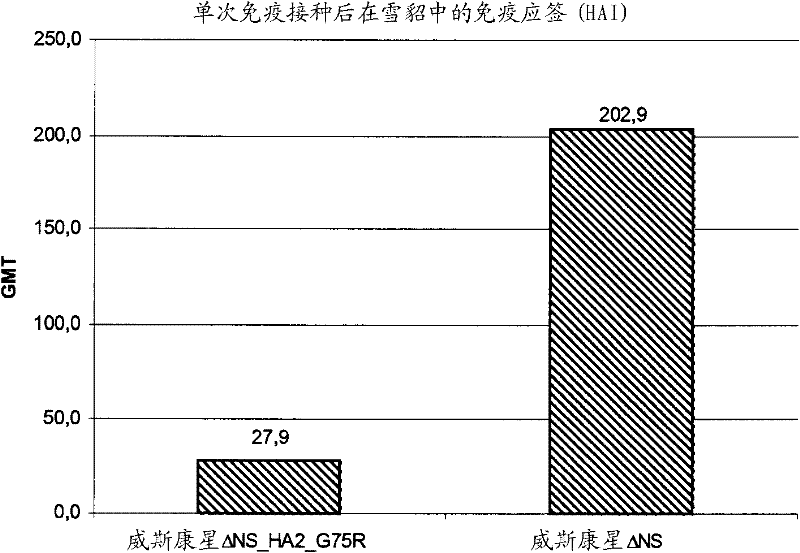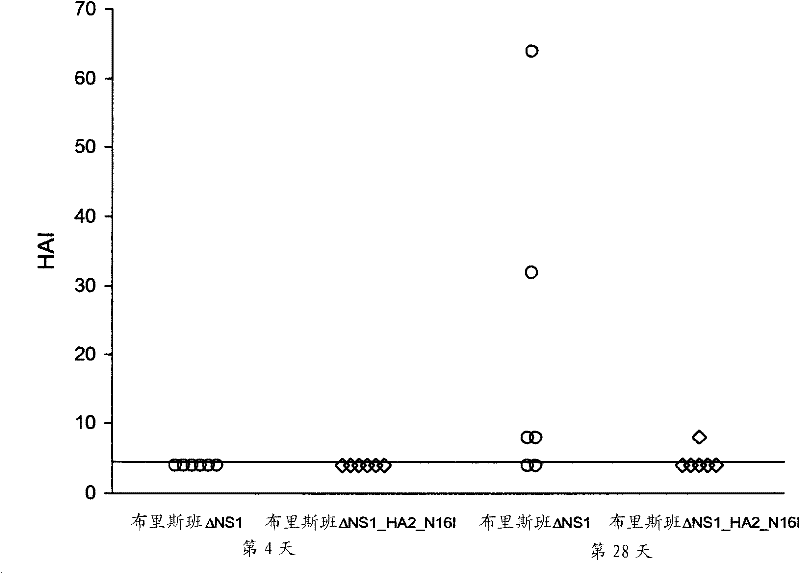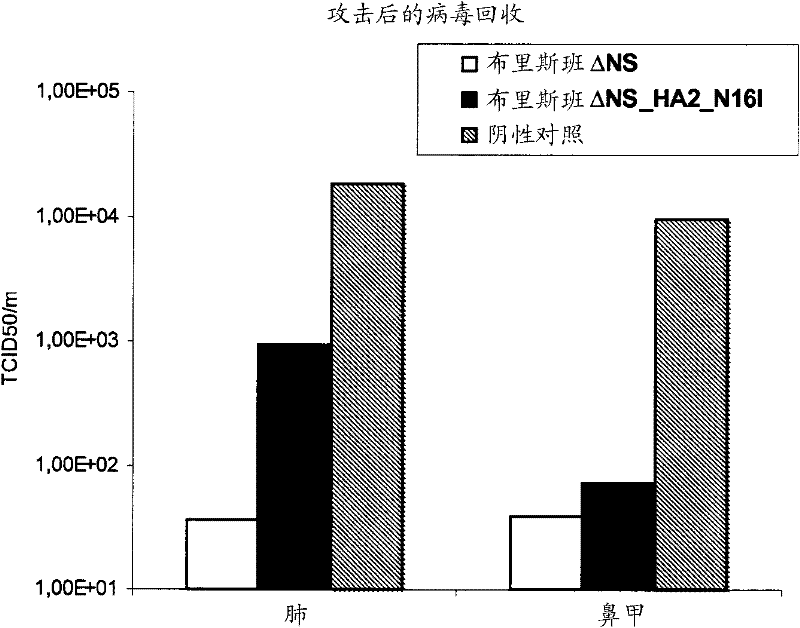Method for production of ph stable enveloped viruses
A technology for enveloped viruses and viruses, applied in biochemical equipment and methods, viruses, antiviral agents, etc., can solve the problems of reducing virus infectivity, reducing immunogenicity, reducing
- Summary
- Abstract
- Description
- Claims
- Application Information
AI Technical Summary
Problems solved by technology
Method used
Image
Examples
Embodiment 1
[0073] Two influenza strains were constructed by reverse genetics carrying surface glycoproteins from the circulating strain A / Wisconsin / 67 / 05 (H3N2) and from the WHO vaccine strain IVR-116 (A / New Caledonian / 20 / 99 and A / Puerto Rico / 8 / 34 reassortant) all other genes, and the NS gene (ΔNS1) lacking the NS1 open reading frame. Due to the different passage conditions of Vero cells, the obtained virus differed by one amino acid substitution in the sequence of the HA molecule. The first virus, named Wisc.ΔNS1, was always passaged on Vero cells, and the virus inoculum was first treated with a low pH buffer, namely:
[0074] MES infection buffer (0.1M MES, 150mM NaCl, 0.9mM CaCl) supplemented with 0.25μg / ml amphotericin B 2 , 0.5 mM MgCl 2 ; pH=5.6) to dilute the virus to the appropriate moi. Vero cells were washed with infection buffer, and viral inoculum was applied to the cells and incubated for 30 minutes. The inoculum was then removed and cells were incubated in serum-free O...
Embodiment 2
[0083] Two H1N1 influenza strains were constructed by reverse genetics, carrying the surface glycoprotein from the circulating strain A / Brisbane / 59 / 07 (H1N1) and all other genes from the WHO strain IVR-116, and lacking NS1 NS gene ([Delta]NS1) combination of open reading frames. The obtained virus differed by one amino acid substitution in the sequence of the HA molecule, which appeared to be due to the different passage conditions of the Vero cells. The first virus, designated Brisbane ΔNS1, was passaged in the presence of amphotericin B under low pH conditions. This procedure resulted in the maintenance of the HA sequence, which appeared to be similar to that of the virus (passage 1 ) isolated in MDCK cells from clinical samples.
[0084] A second virus, designated Brisbane ΔNS1_HA2_N16I, was passaged by standard methods and acquired a substitution in the HA2 subunit, N16I (Table 2). Table 2 shows a sequence comparison of the HA molecules, compared to the original isolates...
Embodiment 3
[0091] Cultivation of influenza B strains on Vero cells under standard conditions also resulted in the appearance of destabilizing mutations at the interface of the HA1-HA2 or HA2-HA2 regions in the HA molecule, which involved a decrease in stability and subsequent reduction in the mutant virus in animal models. Immunogenicity in (data not shown).
PUM
 Login to View More
Login to View More Abstract
Description
Claims
Application Information
 Login to View More
Login to View More - R&D
- Intellectual Property
- Life Sciences
- Materials
- Tech Scout
- Unparalleled Data Quality
- Higher Quality Content
- 60% Fewer Hallucinations
Browse by: Latest US Patents, China's latest patents, Technical Efficacy Thesaurus, Application Domain, Technology Topic, Popular Technical Reports.
© 2025 PatSnap. All rights reserved.Legal|Privacy policy|Modern Slavery Act Transparency Statement|Sitemap|About US| Contact US: help@patsnap.com



